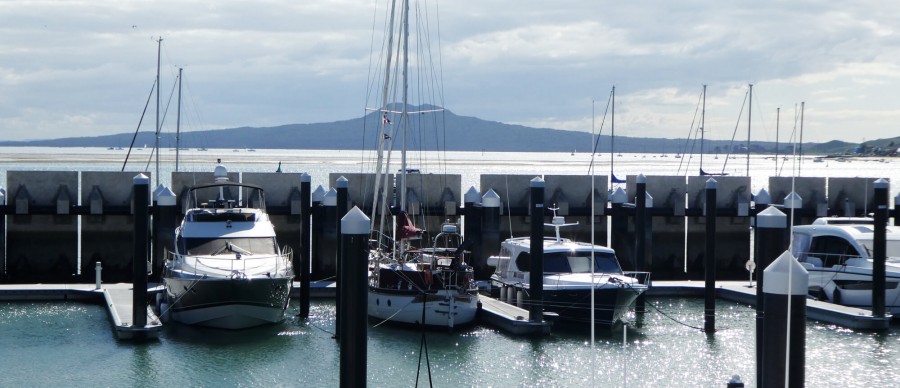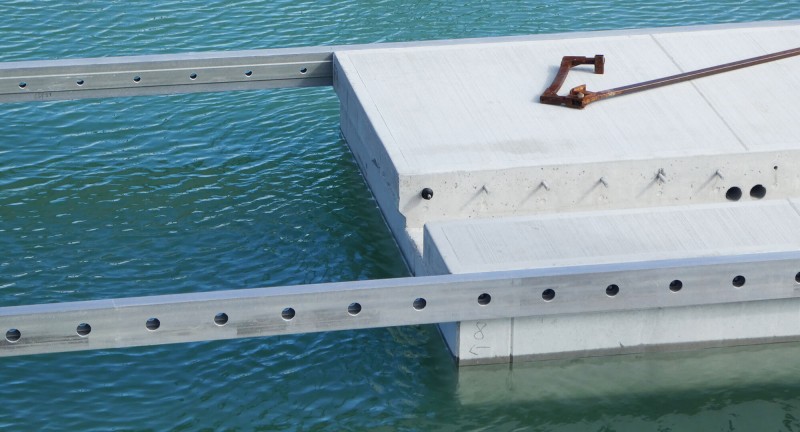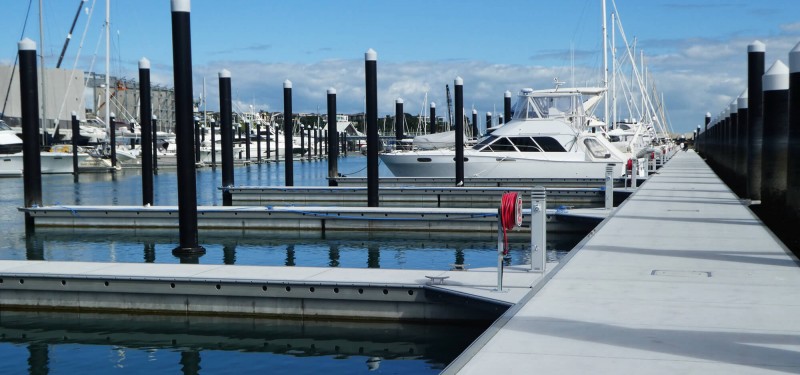FRP Structural Sections are Revolutionizing Marina Construction

The new FRP structural waler was developed by Pultron, in collaboration with reputable marina design and construction specialist, Bellingham Marine. It is the latest design innovation from a company that is leading the field in using new technology to revolutionize marina design. Half Moon Bay Marina is the latest New Zealand marina to take advantage of this new technology.
What is a marina waler?
A waler is an FRP structural beam mounted to the side of the dock section, spanning multiple concrete floats fastening them together. Walers play a critical structural role in marina construction.
It is attached to the floating dock by a glass fiber-reinforced polymer (GFRP) composite thru-rod and nut system. These are long rods, threaded at each end, and held in place by a nut. The waler and thru-rod are critical parts of Bellingham's Unifloat® Concrete Dock System.

Why are FRP structural sections a smart material for marina construction?
Walers can be made of timber, aluminum, or steel but all come with limitations. Timber doesn’t corrode like steel but it does rot and has a shortened life-cycle compared to composites.
GFRP structural components eliminate corrosion risk and deliver several other advantages.
High tensile strength: Composites have high tensile strength (twice that of steel) and are lighter than aluminum.
Flex and fatigue resistance: The GFRP waler offers extremely high flex and fatigue resistance against the constant movement from tides, waves, and boats. The video below shows that the composite waler will flex with the motion and return to its original shape and without losing stiffness.
They are better for the environment: A marina is often home to a range of marine life. Composites won’t impact the marine ecosystem because they don’t corrode or leach chemicals. That’s one way of protecting the environment.
Cost competitive: GFRP composites offer excellent durability and whole-of-life savings especially when used in coastal and marine environments.
They will continue to look great: Bellingham builds marinas in some of the world’s most beautiful locations. With the new composite system, there will be no nasty rust leakage marks or broken concrete caused by corroding steel.
Customized composite waler features
Keyway innovation: A critical innovation in the design was the keyway that locks into a matching detail on the floats. Thus, alignment between floats is retained and reduces shear stress on bolts. By ensuring alignment, you eliminate the risk of tripping hazards. This was a key feature in gaining patent status.
Reduces maintenance cost: Maintenance at a marina can present significant expenses. Retightening of bolts is standard practice due to the constant movement. As part of the Unifloat Concrete Dock System, the composite waler reduces the need for retightening by working with the self-tightening thru-rod system. Thus lowering repair expenses and delivering an estimated service life of 75+ years.
Engineered for safety: The GFRP waler design has a drilled hole on the outside and a central cavity with a smaller drilled hole on the inner face. This allows the nuts to be completely recessed for safety and to avoid damage to boats.

10x flexural strength: Boats running into pontoons are a common hazard at marinas. The composite waler provides high impact resistance and has a flexural strength that is almost 10x higher than timber. If a boat runs into a pontoon, it is less likely to snap the waler at the joint between floats. It provides an even distribution of loads.
Standard-compliant: The composite waler is designed, engineered, and manufactured under controlled conditions to meet strict ISO 9001:2015, ASTM, and specific performance standards.
Composite trifecta is the future of marina construction
The waler is the latest composite marina innovation and follows the success of Bellingham’s award-winning GFRP composite thru-rod and nut system. Both components are developed and manufactured at Pultron using the pultrusion process (see Composites Explained: The pultrusion process).
The next major project to use this technology is the iconic Dana Point Harbor in California, USA. It is a landmark project and an exciting new chapter in the world of marina design. When completed, it will be the first US marina to be outfitted with composite thru-rods, composite walers, and Mateenbar™ composite reinforcement throughout.
Global growth of composites
Advances in composite technology in the last three decades are driving growth in the composites industry. Performance improvements and manufacturing efficiencies have reduced prices to make them competitive when compared to steel, timber, and other traditional materials.
The waler is a great example of what’s possible with GFRP composites and the pultrusion process. There are other applications in industries such as automotive, aerospace, civil/construction, defense, infrastructure, marine, recreational equipment, transportation, and wind energy. The increasing demand for corrosion-free, lightweight, and high-performance materials is driving the growth of composites worldwide.
According to the research report published by Grand View Research, Inc., the global composites market size is expected to reach USD 160.54 billion by 2027, expanding at a CAGR of 7.6% over the forecast period.
The Pultrusion sub-sector is growing 2-3 times faster than other composite sub-sectors.
Have questions about composites and pultrusion? Talk to one of our experts.
